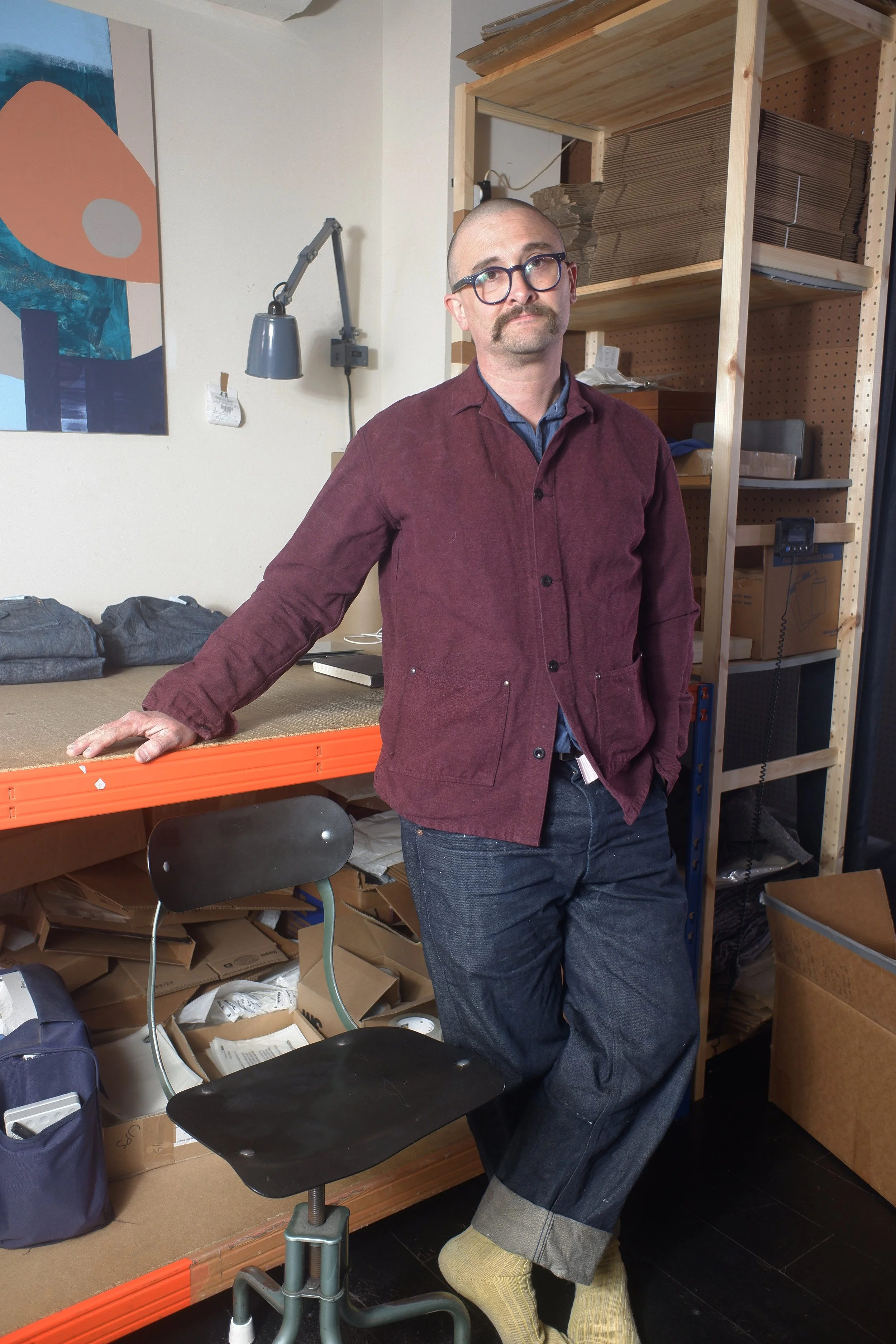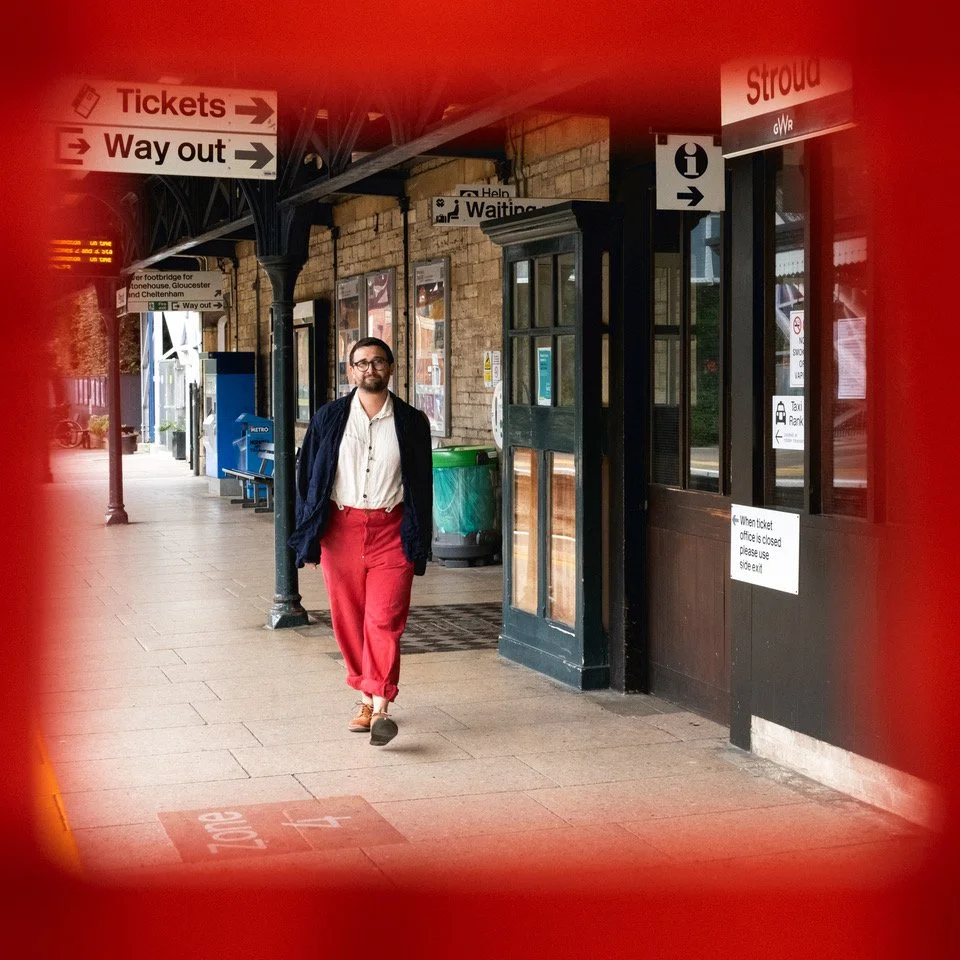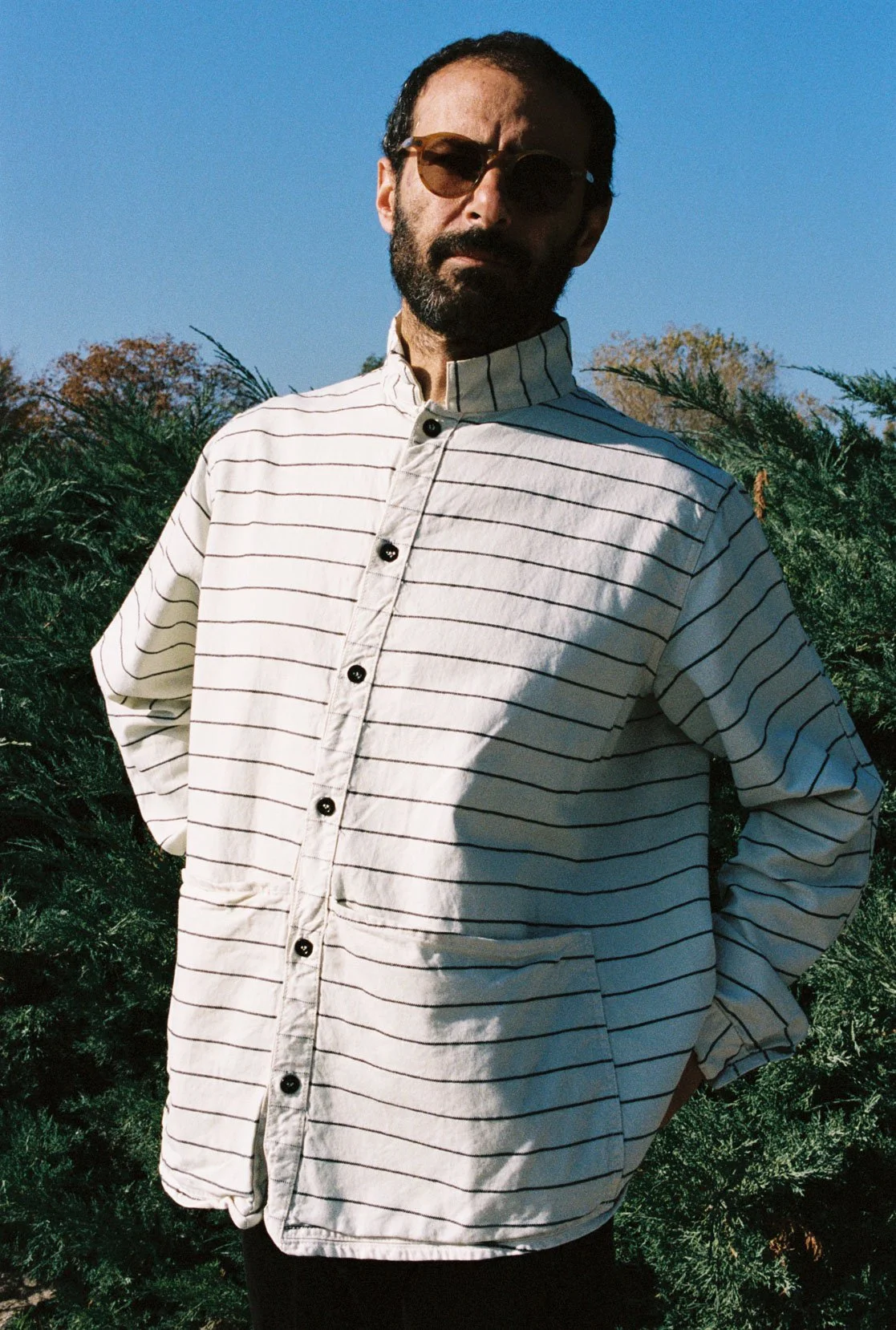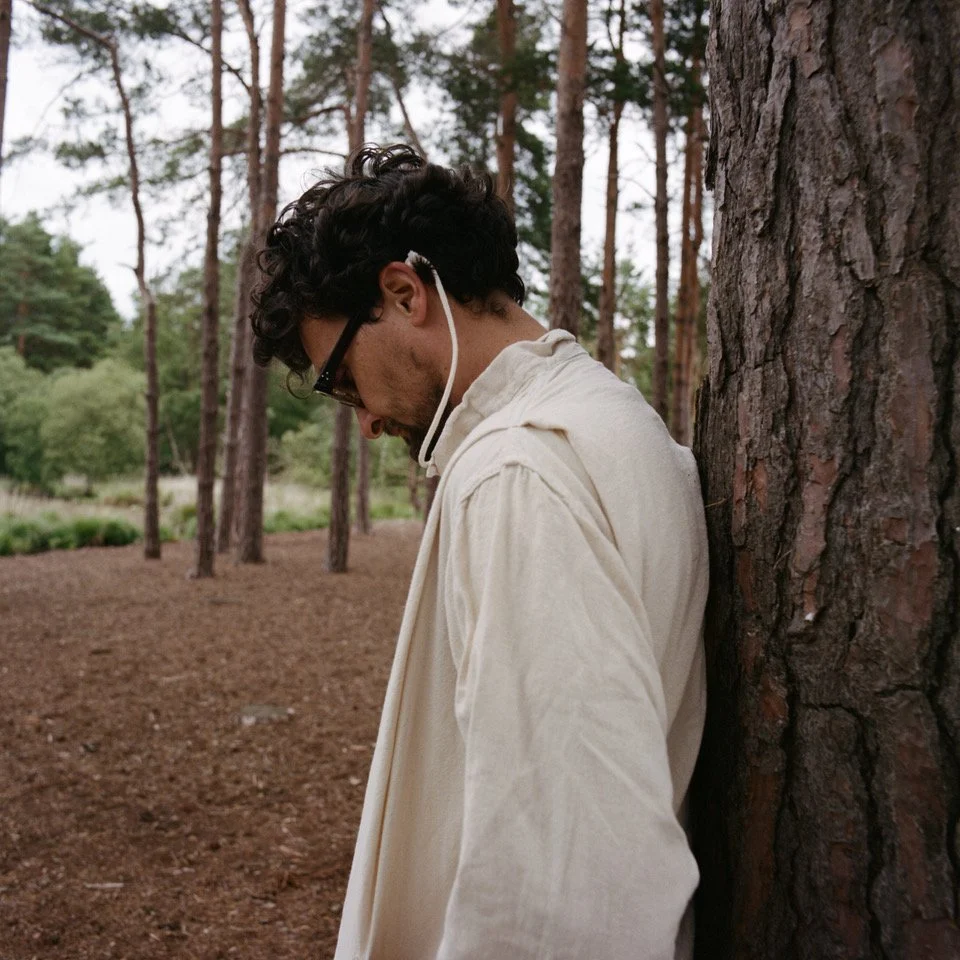Nubes interviews William Kroll of Tender Co.
Tender Co. is the beautiful product of William Kroll, a designer, virtuoso and lovely human. Founded in 2009 in England, Tender has called Stroud its home until 2024, when the brand relocated stateside to Phoenixville, Pennsylvania. Inspired by old workwear, Americana garments and Japanese denim, it was the British Rail that influenced William the most, leading to the creation of Tender Co. and shaping what it is today. Experimenting with natural dyes, developing fabrics and using rare production techniques are at the heart of this brand, making each Tender item unique and special, only to get better with age. SS25 is the last full collection to be produced in England and from AW25 onwards, the brand will be made in the USA. We caught up with William to hear all about Tender clothing…
William in Tender’s studio in Phoenixville. Superbly captured by Faye.
When did you start Tender?
I started in 2009. After graduating from Central Saint Martins in 2006 I wanted to work a little bit and got a job working for Evisu jeans where I learned a lot. It was great working in the Saville Row studio; I had previously done internships in tailors in Saville Row but it was great to be there doing traditional tailoring and Japanese streetwear. I was thinking about what I would do if I had my own thing. I have always made clothes since I was a teenager and was trying to get back into my own thing so I jacked in the job and started out.
I was embedded within Japanese jeans culture then and still think it’s a great thing but I wanted something more specifically me and referencing old garments that weren't sportswear or American stuff. I have been into big machinery and cast iron things so I started looking at British Rail and how that worked with the industrial revolution.
That’s actually where the name comes from, a tender on the railway is the coal truck on the engine. I started researching that and got deeper. I have never done reproduction and I was trying to be experimental, always coming back to the vintage theme – the idea that things should always get better and change. The point of sale is just the middle of the process. You begin with the manufacture, then it eventually passes on to the user/wearer who lives their life in it and it becomes a special thing - the product is meant to be worn. The process from buying to that is as important as design to sale; tending to the garment as you would to a garden or a flock of sheep.
Do you have to convince people of your ethos?
I still haven’t nailed being able to sum up what I do into something very succinct. It’s really the case that if you’re doing it right it should speak for itself. I teach as well and sometimes there, unless you have a perfect response to every single question, then you are “not doing it right”. You will never get it all right. If you are selling fashion clothes you can strive to make them look cool, fit right, feel good and you need to make a case around sustainability.
When it comes to ethos, Tender is a warm idea. It’s rich and there’s a lot to it. Initially it was more or less being seen as a workwear brand, but there has always been more to it (even though that is a great thing itself). I always try to bring in layers, making something that is more than the sum of its parts. It is a personal project – it makes sense from the outside and if it makes sense from the inside, you can see the story overall. I am happy when people get into my stuff when they are not particularly fashion people or people who spend a lot of money on fashion.
[At this point, Oisín went on one about the first time he saw a Tender shirt, declaring his admiration for the construction and how he had to buy it after trying it on. He then lingered into how Bertrand Russell talks about poise; how clothes can change your demeanour and confidence - giving you poise…]
I had a customer in yesterday, he is not necessarily a fashion guy, he is a writer and he came in a bit apologetic. He was clear he wanted to meet and not buy anything. He got excited about things and seeing nuances in colour and textures and trying things on; getting the feeling that these things are individual pieces and not out of a catalogue, they don’t have a barcode. These are unique things and they have love that has gone into them. You could see him feeling good in them.
Where do you source your fabrics?
For SS25, I recently moved to the USA, so the idea or theme was leaving town and saying goodbye to Stroud. SS25 is the last season fully made in the UK with fabrics I’ve developed in the UK. I built up relationships I have enjoyed and benefitted from massively. Last season was fully made in that way and there was a feeling about a sense of place. I am now making a new set of relationships and gradually moving things over to US production. AW25 is now starting production and it has come out really nicely and being here means I can keep tabs on production. British production will go over to Working (coming soon to Nubes). Developing fabrics is lovely and I really enjoyed that. It’s about meeting people and figuring things out.
So you don’t necessarily always repurpose fabrics?
Yes and no – I have recently been repurposing old fabric that I developed for Tender. The materials have all been Tender fabrics as I always kept everything. Some fabrics are woven in 2013/14 overalls. They are my designs and are about things improving with age. I don’t mark stuff down as I don’t think of it as part of a season, I think of it as an archive of previous things.
That’s part of the Nubes philosophy - no seasons, no sales. We think it devalues the maker and product. These garments are so special, designed to be worn and repaired. What makes a “new season” item more special and worthy of a higher price than something from a few months or years back - it doesn’t make sense, it’s not a sustainable approach.
Things become more special. I’m all excited about deadstock – it’s great to create your own deadstock. It’s almost like wine, like an anti-fashion thing.
It would be nice to sell it like you’re buying wine.
It will be aged at the vintner you will get it in 20 years time!
What initially brought you to Stroud?
It’s similar to Phoenixville, a bit of an old hippy place that’s just far enough away from the city to have city people but not be a commuter place. Both are Victorian industrial towns – Stroud for wool and Phoenixville for iron.
How is the community in the US?
Phoenixville is a great, tight community. A diverse small town with a community of all different backgrounds, jobs and lifestyles. There is still industrial stuff going on, just a lovely mix of types of people and the architecture is great. People look out for each other. Me and my family know a lot of people and they know us. There are always a tonne of kids in our house. People just show up, it’s lovely. It’s close to Philly and NYC – I had a day teaching in Parsons, it was great.
Are you being exposed to different materials or dyes for inspiration?
Not specifically botanically, but I am thinking yes for sense of place. AW25 pictures were taken in Valley Forge, a national park here, where George Washington’s army defeated the English. The feeling of the collection I hope has a different vibe to it. For the new stuff I am working with American fabrics and trying to embrace all of that. With the samples of stuff getting made here, there is subtly a different flavour to it even though they are my patterns and I am making my own thread and buying my own buttons, but it’s just being combined or cooked in a different way. On that note, I am reading a book on masa.
What is your creative process?
Ongoing and haphazard! I think of what I am doing as product design as opposed to fashion design. I am not designing a collection for the catwalk. It is designing the garment and how it will be used. I see it as problem solving and experimentation: thinking of an idea that’s cool to do then working out how to do it. The product is the end of the process. A pure fashion designer might sketch out the idea then make it, but I work out something I want to do, conceptually something different.
Dyeing is more interesting to me than colour picking. You get whatever you get. You’re not trying to match a Pantone. I have been doing a range of colours of hadal blues and purple, trying to do the darkest blue I can achieve. If thinking about a Pantone, the job of the dyer is to make them all look the same. I want to show the process. I apply that to the design and manufacturing. If I have an idea of how a pocket will work, I will follow that through then see how that affects the front placket or sleeves. For example, the Sack Shirt was based on something I saw on a nurse’s shirt and refers to shooting jackets or western jean jackets; this idea of a tabard or dinner lady smock. It starts with a set of ideas, not a drawing.
The Sack Shirt worn by William.
The word nuance derives from the Latin for clouds – ‘nubes’. What do clouds mean to you?
My son has asked to learn Latin! He likes that ancient stuff. I think it’s a lovely name. I look at contrails of aeroplanes and clouds out of power stations. The idea that they are markers of something that has happened; a result of temperatures and liquids happening.
A visible sign of something invincible happening. These clouds are all signs of things being done.
What’s your favourite colour?
Green.
Do you have any rituals?
I am a keen cook. Food is my personal thing. I enjoy baking bread and making coffee. Cooking and sharpening knives on a whetstone. Actually my favourite knife is German – a Robert Herder. I like getting out a chopping board and a knife, starting with onions and seeing where it goes. I cook at least once a day.





